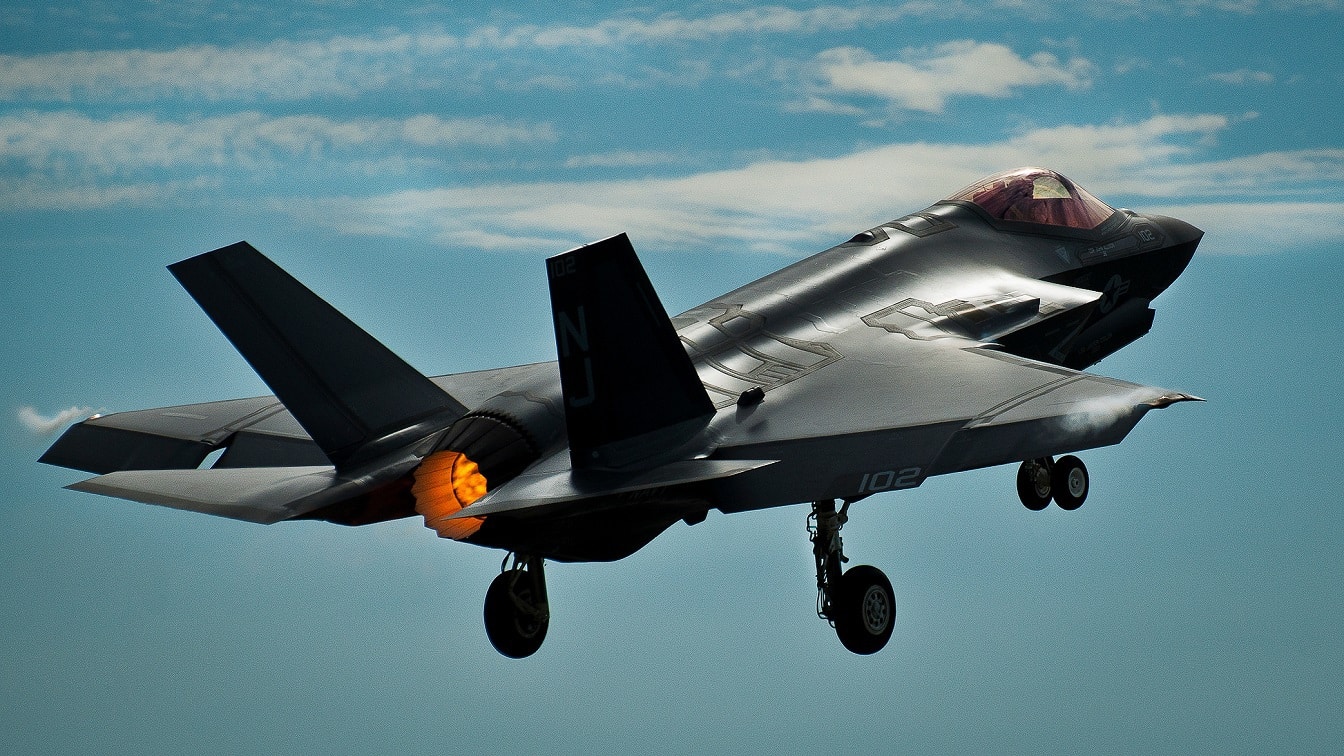On Monday, an F-35C Lighting II fighter jet had a landing mishap and the pilot was forced to eject during routine carrier operations in the South China Sea. Seven sailors have been injured.
The F-35C stealth fighter jet was attempting to land on the nuclear aircraft carrier USS Carl Vinson when the incident happened.
Landing Mishap
The fifth-generation F-35C fighter jet was assigned to Strike Fighter Squadron (VFA) 147 “The Argonauts” from the Carrier Air Wing 2 and based on the USS Carl Vinson. The incident occurred either during or after landing on the aircraft carrier. The pilot managed to safely eject and was rescued by a search-and-rescue helicopter that was on standby for such contingencies. A total of seven sailors were injured, three of who were evacuated in Manila, in the Philippines, for additional medical attention.
“The pilot safely ejected from the aircraft and was recovered via U.S. military helicopter. The pilot is in stable condition. There were seven total Sailors injured; three Sailors required MEDEVAC to a medical treatment facility in Manila, Philippines, and four were treated by on-board medical personnel. All three MEDEVACs are assessed as stable. Of the four Sailors treated by on-board medical, three have been released. Additional details and the cause of the inflight mishap is under investigation,” the Navy said in a press statement.
The U.S. Navy is investigating the incident and hasn’t released information on the status of the aircraft or what caused the landing mishap. One possible explanation is that a wire might have snapped after the catch, sending the aircraft running on the deck. Aircraft designed for carrier operations have a hook underneath their tale that they deploy during their final approach aiming for a cable that is strung out on the deck to stop the aircraft. It is a very tricky maneuver that requires tremendous practice.
Right now, it is not clear if the F-35C that crashed will be able to return to service or has been damaged beyond repair. If the aircraft was forced into the water, the U.S. Navy would have to mount an intricate operation to recover it from the bottom of the sea and prevent adversaries, such as China or Russia, from recovering it first and getting their hands on its highly classified technology.
With an approximate price tag of $95 million per aircraft the “C” variant of the F-35 fighter jet has been specifically designed for the U.S. Navy, which is also the sole user of the variant in the world.
Third F-35 Crash
The incident marked the third F-35 crash in recent months.
In November, a British F-35B operating from the aircraft carrier HMS Queen Elizabeth crashed into the sea immediately after taking off. The cause of the accident was an engine rain cover that had been forgotten on the aircraft.
In early January, a South Korean F-35A had to crash land on the runway after a bird strike malfunctioned its landing gear.
1945’s New Defense and National Security Columnist, Stavros Atlamazoglou is a seasoned defense journalist specializing in special operations, a Hellenic Army veteran (national service with the 575th Marine Battalion and Army HQ), and a Johns Hopkins University graduate. His work has been featured in Business Insider, Sandboxx, and SOFREP.

